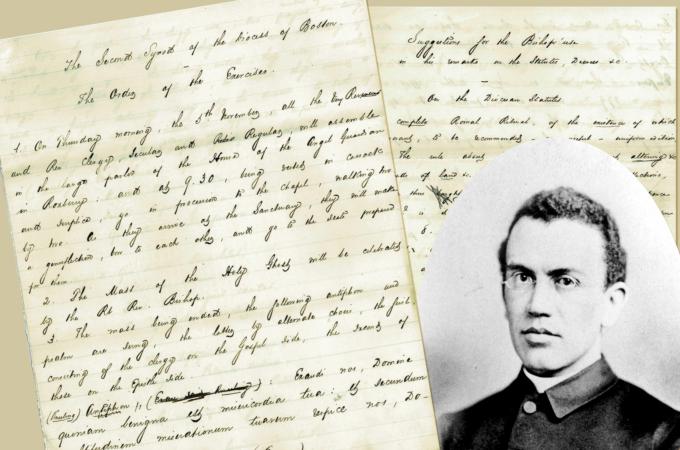Boston's second diocesan synod
Nov. 5 will mark 150 years since the second diocesan synod. Writing in the mid-20th century, diocesan historians remarked that the decrees agreed upon during the synod "have furnished the ground plan and a great part of the substance of all our later synodal legislation."
Readers may recall that Bishop Fenwick called for the first diocesan synod which took place in August 1842. It brought together all 30 priests from the Diocese of Boston to discuss policies and procedures that would be implemented across the diocese, the most notable addressed at the time being trusteeism, or the ownership and management of parishes by the laity.
The second synod was the direct result of the Second Plenary Council of Baltimore held from Oct. 7-21, 1866, and considered "by far the most important assembly that had been held in the American Church down to that time." Largely the work of Archbishop Martin J. Spalding of Baltimore, it brought together nearly 200 Catholic bishops, theologians, and others to review canon law, as well as decrees passed by previous councils at Baltimore and the individual dioceses, to determine which should be implemented across Catholic dioceses in the United States.
In attendance was Bishop John J. Williams of Boston, accompanied by Father Alexander "Sherwood" Healy and Father William Blenkinsop. One of the approved decrees called for diocesan synods to take place after each plenary or provincial council so that the new decrees could be debated and voted upon at the diocesan level prior to implementation. Bishop Williams waited for Rome to approve the 228 decrees agreed upon in Baltimore, and then called for a diocesan synod to discuss them with his priests.
On the morning of Thursday, Nov. 5, 1868, 140 priests gathered at the House of the Angel Guardian in Roxbury to begin the synod. There are several documents in the archive which offer insight into the events, three of which are in Father Healy's handwriting, the first being "The Order of the Exercises," which starts with detailed instructions for the opening Mass at 9:30 a.m.
Following Mass, business commenced with Bishop Williams announcing the names of nine priests who would serve as Diocesan Consultors, a body of advisors to the bishop whose creation was approved at the Plenary Council. Next, "a few preliminary decrees were read," and a roll of those present was taken.
The bishop was responsible for calling the synod, and the document implies that he was also in charge of proceedings. For example, at the end of the morning session he held the responsibility of instructing those in attendance if an afternoon session was required and, subsequently, at the end of the afternoon session he determined if another session was needed the following morning, and so on. This allowed him to dictate the duration of the gathering.
Two other documents in Father Healy's hand reveal the role he played in preparing Bishop Williams for the synod. They contain notes, or "suggestions," to help prepare Bishop Williams for questions he may receive about specific decrees and offer justification for each one. Ultimately, all 228 decrees were accepted by the priests of the diocese.
- Thomas Lester is the archivist of the Archdiocese of Boston.



















